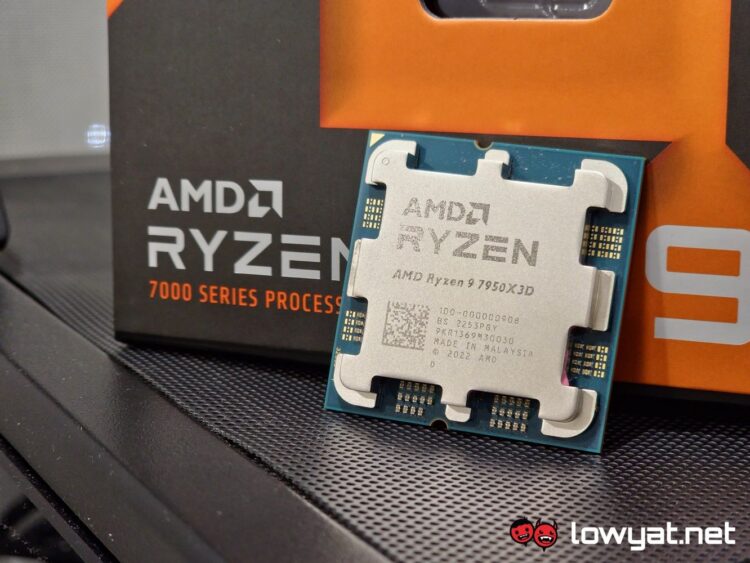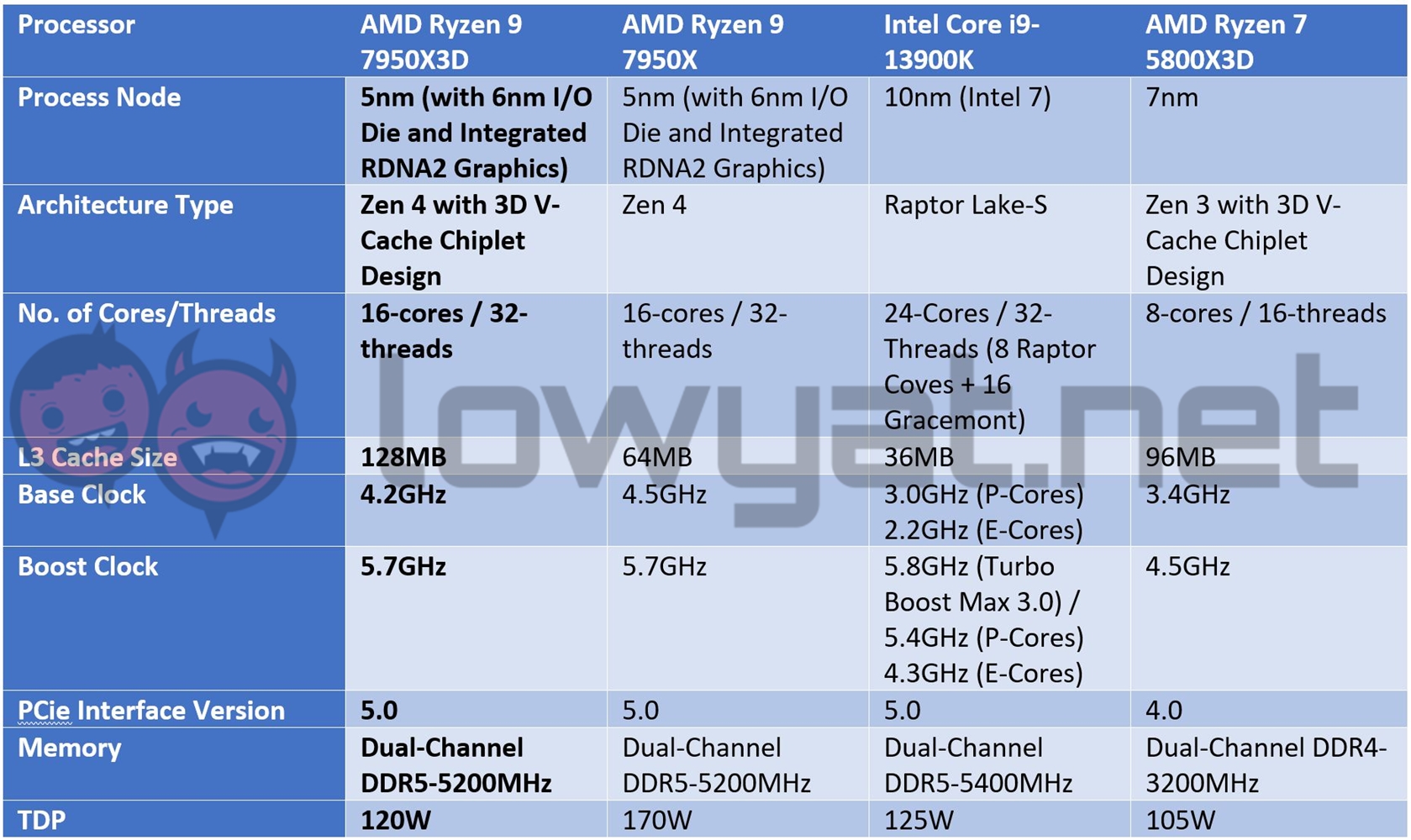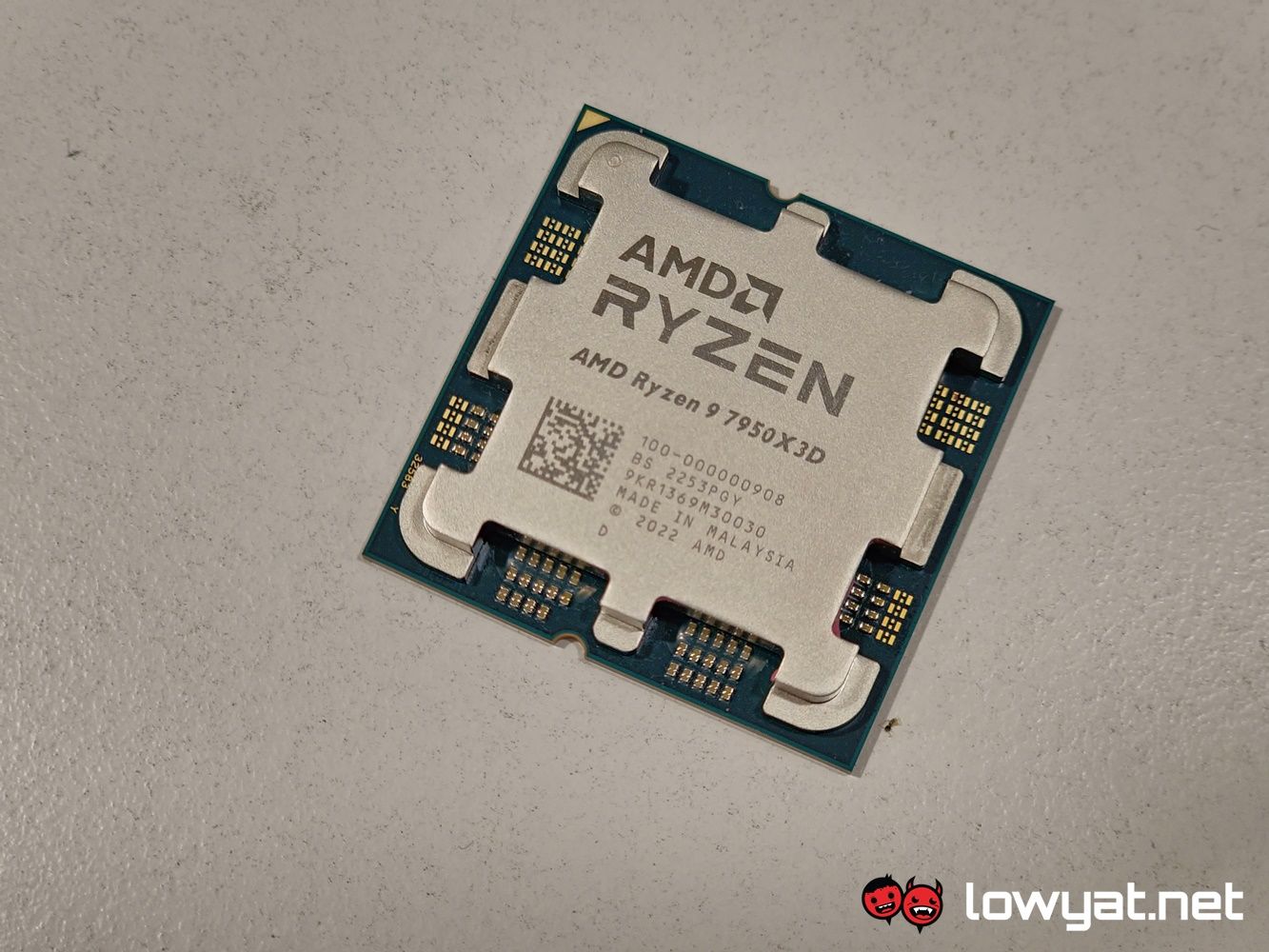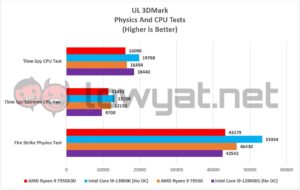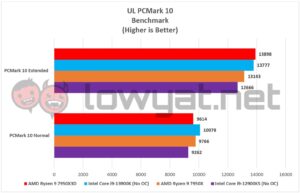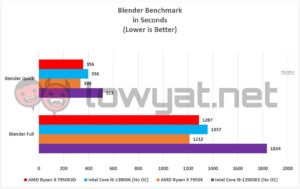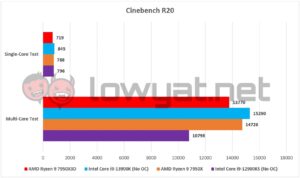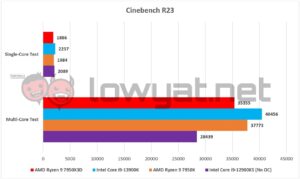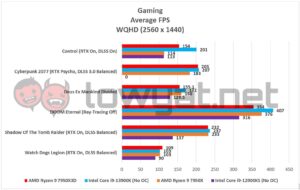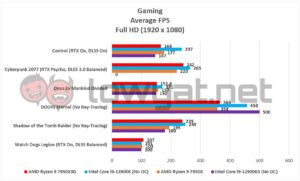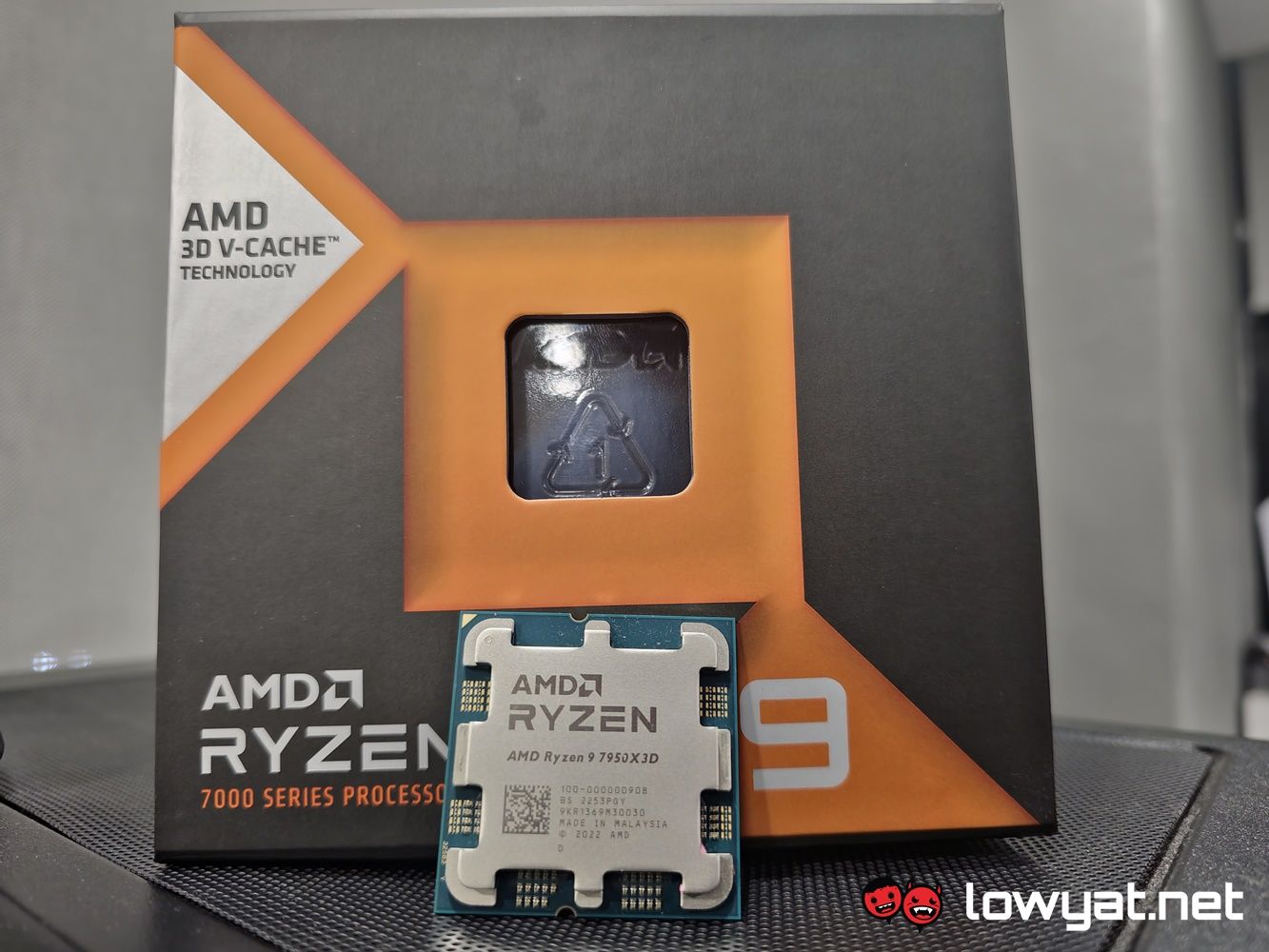For some reason, AMD has decided to launch its new Ryzen 7000X3D lineup much, much earlier than when it first launched the Ryzen 7 5800X3D. Of course, unlike the first time, the new processor, equipped with the brand’s 3D V-Cache technology, is now available in three flavours. Sitting at the top of this pyramid is none other that the Ryzen 9 7950X3D.
Priced at RM3299, we’ll be looking at just how much more gaming performance you can get for a CPU that you can’t overclock, at least traditionally.
Specifications
Design
As I said at the beginning of the review, the 7950X3D is part of AMD’s new three-punch initiative to provide its customers with options for its 3D V-Cache technology. Internally, the CPU is nearly identical to its non-3D counterpart – you still get the same Zen4 microarchitecture, based on TSMC’s 5nm process node, flanked by the 6nm I/O die, as well as the same 16-cores and 32-threads.
Now, I say nearly identical because where the 7950X3D differs from the traditional 7950X is actually in a few areas. First, and this is obviously its main selling point, the CPU’s L3 Cache has been fortified with the state’s 3D V-Cache technology, effectively doubling the amount from the usual 64MB to 128MB. Second, it’s got a slightly lower boost clock of 4.2GHz, versus the 4.5GHz of its non-3D sibling.
The third point of the 7950X3D, depending on who you ask, can be seen as a flaw or drawback, rather than a boon, and that is the lack of the ability to be overclocked. At this stage, I’ve probably briefly explained why this is the case but I’ll repeat the reason here so you don’t have to go scouring the site for the reason: like the 5800X3D, AMD has hard locked its 7000X3D lineup, meaning that you can’t physically overclock these CPUs, not in a traditional sense, at least.
By that last part, you can still technically “overclock” and push the 7950X3D and its other siblings to run faster but in order to do that, you’ll actually need to do a mildly complicated song-and-dance routine that involves going through AMD’s EXPO settings and its Precision Boost Overdrive (PBO) 2 software. It’s already been tried and tested but honestly, there’s not a whole lot of reason to do it, not unless you’re one of those folks that just can’t take CPUs or GPU speeds at their default clocks.
Of course, because the 7950X3D is based on the same Zen4 microarchitecture, this also means that the CPU is compatible with the accompanying socket AM5 chipset and new DDR5 memory standard.
Testbed
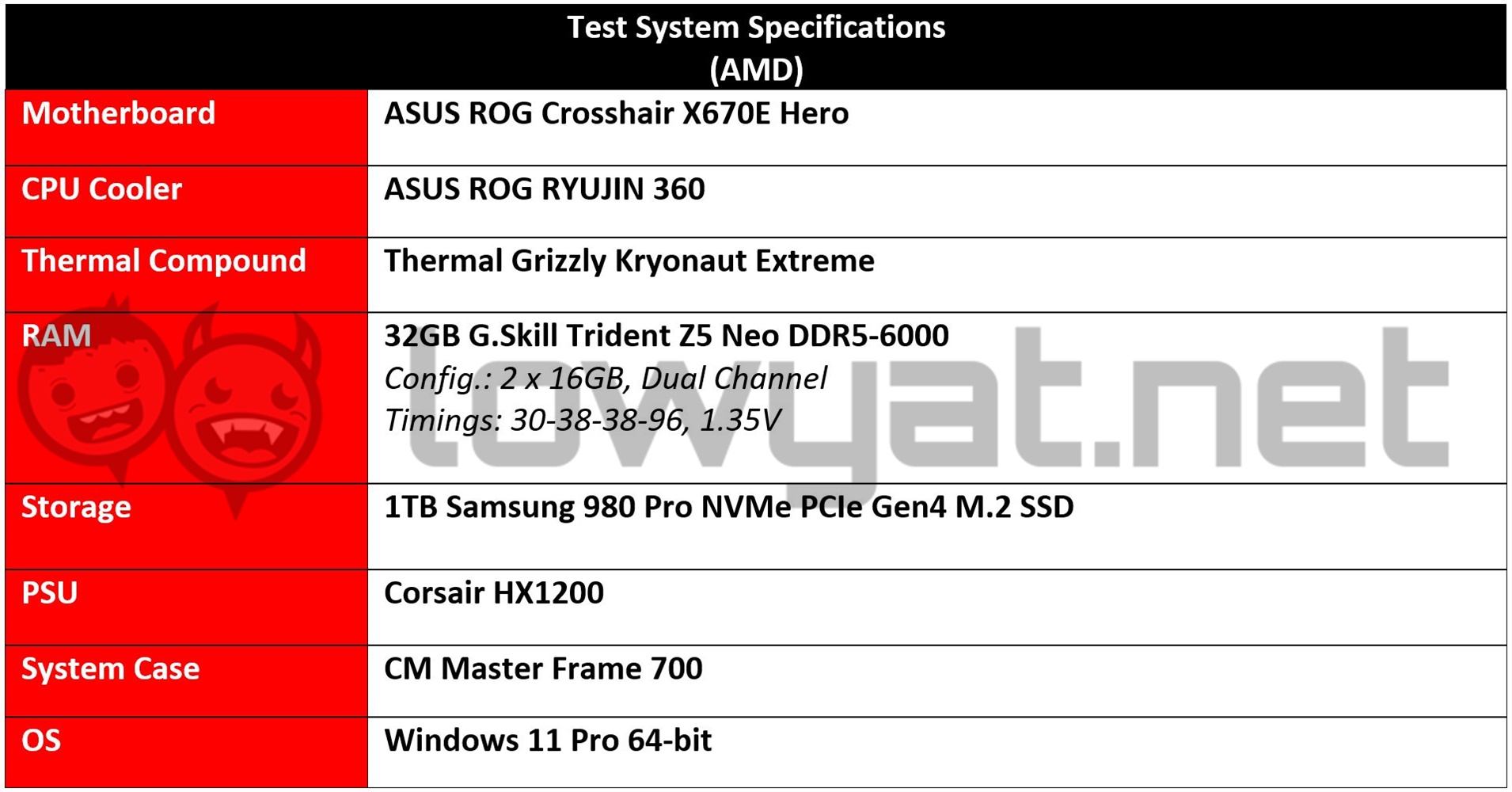 Testing the 7950X3D is conducted with the use of my defacto AM5 testbed, which comprises the ASUS ROG Crosshair X670E Hero, 32GB DDR5-6000 RAM from G.Skilll Trident Z5 Neo brand, and cooled with the ROG Ryujin II 360 AIO Cooler. As this is a top-tier, high performance CPU, I am comparing its performance metrics against the original 7950X and Intel’s Core i9-13900K.
Testing the 7950X3D is conducted with the use of my defacto AM5 testbed, which comprises the ASUS ROG Crosshair X670E Hero, 32GB DDR5-6000 RAM from G.Skilll Trident Z5 Neo brand, and cooled with the ROG Ryujin II 360 AIO Cooler. As this is a top-tier, high performance CPU, I am comparing its performance metrics against the original 7950X and Intel’s Core i9-13900K.
Benchmarks
If I am to be honest, I was kind of hoping that the 7950X3D would, in some ways, overtake the 7950X’s performance overall. However, based on the performance metrics that I gathered in my in-depth review, the numbers appear to show it going toe-to-toe with its non-3D counterpart. Of course, it’s evident that the 13900K is still the clear winner in almost all of the benchmarks.
When it comes to gaming, the 7950X3D shows repeat performance, both in closing the gap and overtaking the 7950X, but in all cases, it struggles to even meet the 13900K head-on. In fact, the 13th Gen CPU from Team Blue virtually blows past it, without even so much as a second thought.
Temperature And Power Consumption
One of the parting pieces of the 7950X3D is its slightly improved thermals over its non-3D counterpart. On average, the CPU generated between 10°C and 12°C less heat than the 7950X while running the most arduous tasks, and is a good 25°C cooler than Intel’s own powerhouse 13th Gen 13900K and 12th Gen 12900KS.
Having said that, the 7950X3D does seem to have a much hotter idling average temperature of 42°C, and that’s with the lab’s ambient temperature kept at 20°C throughout the review process.
 There’s also the power consumption of the 7950X3D. Just as I observed in my review of the non-X Ryzen 7000 CPUs, the stated maximum TDP is clearly just a guideline. On paper, the CPU is supposed to peak at 120W but on the HWInfo metrics, the processor clearly draws more than that, but the good news is, the extra draw from the wall isn’t absurdly high.
There’s also the power consumption of the 7950X3D. Just as I observed in my review of the non-X Ryzen 7000 CPUs, the stated maximum TDP is clearly just a guideline. On paper, the CPU is supposed to peak at 120W but on the HWInfo metrics, the processor clearly draws more than that, but the good news is, the extra draw from the wall isn’t absurdly high.
Conclusion
Just AMD set out to prove with the Ryzen 7 5800X3D, the Ryzen 9 7950X3D is clearly one hell of a powerhouse CPU where gaming is concerned. Of course, that power comes with the caveat of locked performance and the inability to physically push the hardware but in my honest opinion, it’s a feature that I don’t think you’d be persistently fussing over, especially if you’re a “one and done” individual that’s just looking for the best of the lot to be fitted into your system and not upgrading for the next several generations.
But while the 7950X3D has the ability to match its non-3D counterpart in its performance, my chief gripe with the CPU lies with its pricing. At RM3299, the CPU is now RM100 costlier than the 7950X, and frankly, it feels a little bit ridiculous, primarily because, again, you can’t easily or manually overclock it and push it to its bleeding edge. Honestly, how AMD can charge more for such a product and keep a straight face while doing it, I don’t know.
That being said, the 7950X3D still has a significantly better performance-per-watt value in spite of these limitations. So, as I usually say, if these points aren’t a deal-breaker for you, then by all means: have at this powerhouse of a CPU. Otherwise, you’re honestly better off with the non-3D 7950X.

